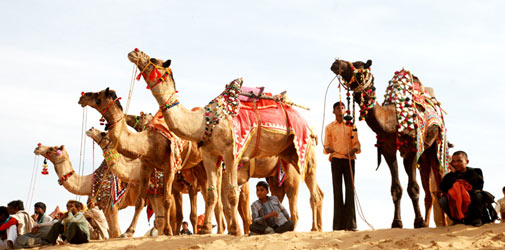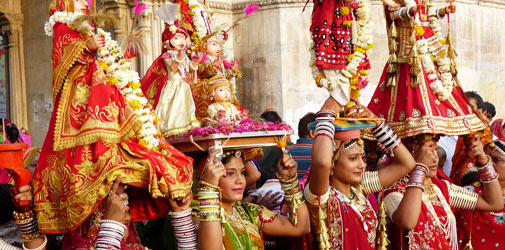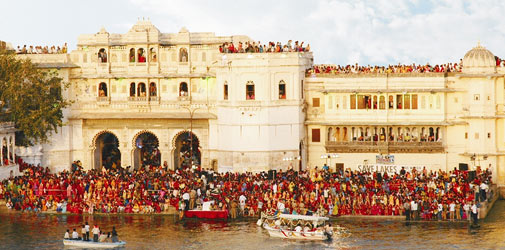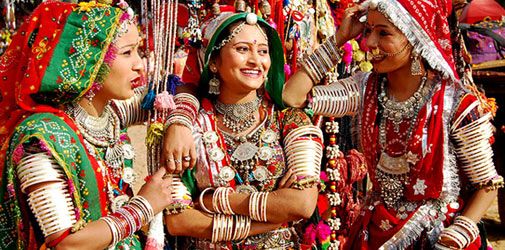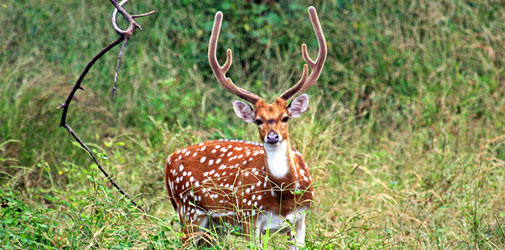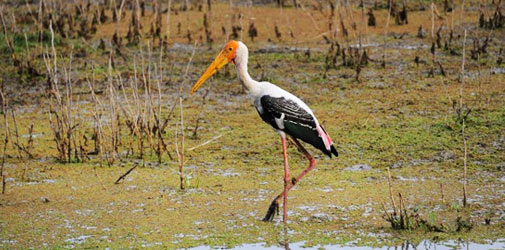Pilgrimage
The number of Buddhist Gompas and monasteries signify the reigning religion of Ladakh i.e. Buddhism. The monastic festivals at Phyang Monastery, Hemis Monastery and Chemrey Monastery are quite popular. All these monasteries belong to the Namgyal Dynasty. Tibetan Buddhism heavily influences Ladakh, with central Ladakh supporting many of the monasteries of the reformist group, such as the famous Thiksey Monastery, Likir Monastery, Rizong Monastery and Spituk Monastery. Leh and Choglamsar have many famous Buddhist study centers. Most of the Ladakhi people are Buddhists and it is believed that many Buddhist saints have meditated in the caves of the mountains of the region. Zanskar is a neighboring sub-district of Ladakh and shares its cultural and religious affinity. Following are some of the pilgrimage sites of Ladakh region.
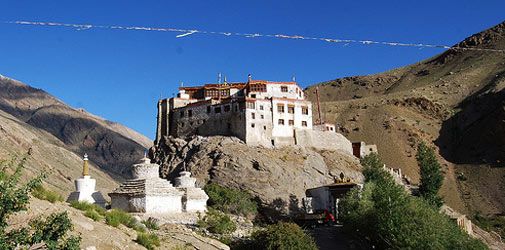
Padum
The pristine settlement of Padum was the capital of the erstwhile ancient princely Kingdom of Zanskar. This site is nestled at a staggering height of 3505 meters above sea level. Today, it serves as the administrative headquarters of the region and supports a population of around 1500, which makes it the most densely populated settlement of Zanskar. The town has a number of pilgrimage sites which include the 8th century rock carvings, chiseled out on a massive boulder near the riverbank. It is an exquisite specimen of North Indian Buddhist influence in this region. Placed above the scenic town is the Starrimo Monastery, which has been built in remarkable Stupa architectural style. This fascinating monastery is home to 30 monks and offers panoramic views of the magnificent landscape surrounding it.
Stongdey
The old Stongdey Monastery is placed almost 18 km from the settlement of Padum. The resplendent monastery has deep ties with Marpa, the Tibetan Yogi. At present, it is Zaskar’s second largest monastery and home around 60 Gelug Pa monks. There are various marvelous shrines placed in the elaborate temple complex, each one being a treasure trove of the region’s rich monastic legacy. The strenuous climb to reach this monastery takes around 4 hours; however, one is awarded with breathtaking views of the valley from the top.
Zangla
Zangla is placed almost 35 km away from Padum, deep in the northern region of Zanskar. This secluded site is adorned by a small chapel placed on a hill top. From the monastery, one can catch a spectacular bird’s eye view of the vast desert valley spread below. One should also visit the old nunnery located near it. Another must visit site of the region is Tsazar Monastery, placed in the nearby village. It is festooned with stunning frescos, which makes it quite special. The old rope bridge constructed here, though out of use now, is a wonderful example of the ingenious craftsmanship of the people of this region. Zangla is a significant part of the major cultural sites of Zanskar.
Sani
The majestic monastery of Sani is placed at a distance of almost 6 km from Padum. The construction of the monastery is peculiar as, unlike most of the monasteries built on secluded mountain tops, this extensive monastery has been constructed on the flat plains of the region. This monastery was built when the foundation of Kanika Stupa was laid at this side. One of the most extraordinary features of the monastery is the elaborate multihued prayer hall which is decorated with numerous figurines of Durgpa Saints and Buddhist Deities. However, the highlight of the site is the small, almost forgotten, chapel placed in the monastery’s backyard. Its walls are decked with absolutely spectacular frescos and stucco murals which depict major events from the life of Padma-Sambhava. One can enjoy the annual fiesta held here in the month of July. The festival is dedicated to the famous Indian yogi Naropa. Monks perform various masked dances which are an integral part of Ladakh’s religion and heritage.
